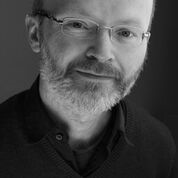Johnny Rogan’s 1984 biography The Kinks: The Sound And The Fury is expanded and enriched here, by building on its research to portray the band’s mercurial leader, Ray Davies. Despite the 31 years since his earlier book, this is still at heart about the 60s Kinks.
Rogan makes great play of being their near-contemporary, and the essential “empathy with the moral, musical and social landscape of pre-War London, particularly during the Fifties” this gives him. The book is at its best bringing to life the poverty and closeness of the large Davies clan in a cramped Muswell Hill home where you can almost sniff the dripping, and claustrophobic, troubled Ray’s escape to art school and Soho bohemia.
The Kinks’ early music was inseparable from the modest street where Ray and brother Dave were raised. Latter-day myths such as their 1968 classic The Village Green Preservation Society’s supposed obscurity on release are also debunked with I-was-there detail.
Among several small, crucial coups, Rogan finally interviews Ray’s first wife Rasa on home life with her difficult husband, and why she left him in 1973, a nightmarish period that climaxed with Ray declaring The Kinks dead at a grim White City gig, and his probable suicide attempt the same night.
Bit-players such as the female backing singers from the 70s concept-album tours give close-up accounts of thuggery and paranoia. Jonah, Ray and Dave’s young Muswell Hill neighbour and over-worked 60s roadie, recalls being scarred by a post-gig crash in which the van’s windscreen smashed into his mouth, then callously let go by the brothers. Later band-members tour the US on builders’ wages, bringing harsh perspective to Ray’s infamous meanness.
The violence, on-stage and off, is relentless. We’re one-third of the way into the tale’s 626 pages, though, and drummer Mick Avory has only just sliced Dave’s head open in a 1965 on-stage Cardiff battle. Another 200 pages and Rogan is reluctantly entering the 70s.
Though he researches diligently throughout, his heart isn’t in the later years, which are viewed from an increasing distance. What begins as a vivid, heartfelt recreation of an era and Davies’ formation by it becomes more perfunctory, perhaps because latter-day access to his subject was limited to a brief encounter last year, at which Ray suddenly breathes again on the page.
Davies today remains equally complicated, but escapes his biographer./o:p

